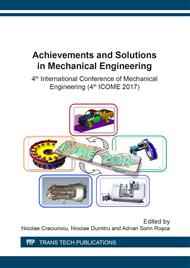p.341
p.347
p.353
p.359
p.365
p.371
p.377
p.383
p.389
Smart Signalization and Public Transport Priority, a First Step to Smart Mobility in a Smart City
Abstract:
Smarty city is a current topic, growing very fast in the last years. This concept is linked as a winning strategy to solve some major problems of big cities, like pollution, traffic jams, energy consumption, etc. Smart city is the next level, a more complex concept of the much restrictive green city, being an extension of this one, involving a better urban zone, a smaller environmental footprint, a higher penetration of ICT in the city life. A very important component of a smart city is the urban mobility, a smart mobility in a smart city. The aim of the paper is the presentation of the first step in this direction, because a smart mobility involve a smart signalization first. To reduce the traffic jam in an cross junction, an adaptive signal master plan of the intersection are used, with the help of a dedicated software.
Info:
Periodical:
Pages:
383-388
Citation:
Online since:
March 2018
Authors:
Price:
Сopyright:
© 2018 Trans Tech Publications Ltd. All Rights Reserved
Share:
Citation:


